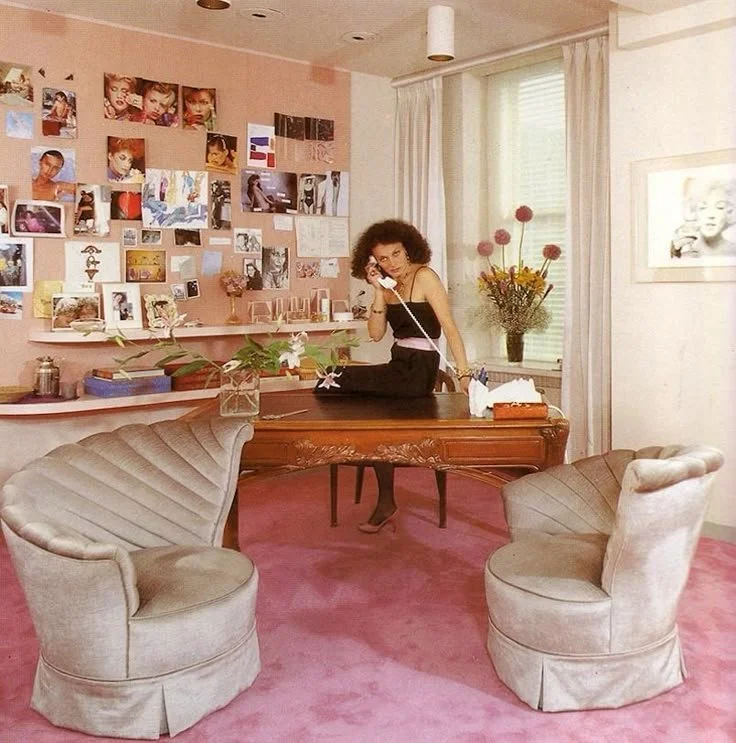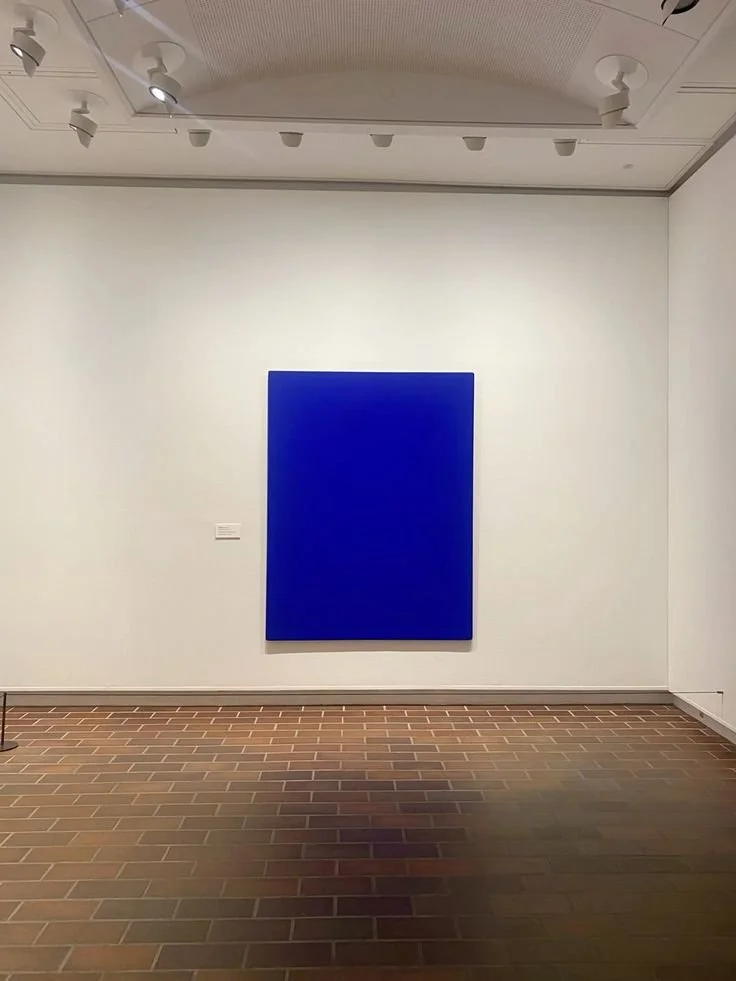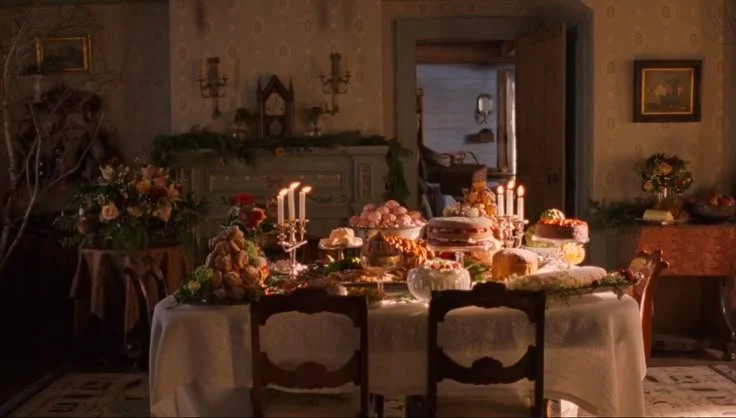The brand that found you
Diane von Furstenberg in her pink office, 1983
It usually starts in passing. Someone introduces you at an event: “She’s the one who always knows the coolest artists.” A friend DMs you a job posting and says, “This is so you.” You weren’t trying to build a brand. You were just doing what you do: making, sharing, shaping. And then one day, it clicks. You’ve become recognisable. Not necessarily famous, but consistent. You have a tone, a look and a way of being remembered.
It might feel flattering. It might feel claustrophobic. Often, it’s both.
For founders, artists, chefs, writers and designers alike, personal branding doesn’t always begin as a conscious act. More often, it grows organically through repetition, association, aesthetic instinct and other people’s projections. Your work enters the world and the world starts shaping you in return.
That feedback loop can be subtle or sudden. Take Rihanna. Her image as a chart-topping pop star became so culturally dominant that it risked overshadowing her broader creative potential. When she pivoted into fashion and beauty with Fenty, the industry initially treated it like a celebrity side project, until it wasn’t.
That tension between intention and interpretation is something many creatives recognise.
The quiet build
Before the pitch decks, before the Instagram grids, before the agency bios and blurbs, there’s a pattern of behaviour. You cook with a certain rhythm. You light your space a certain way. You title things with the same cadence. Without realising it, these patterns become recognisable. And recognition becomes narrative.
Most personal brands don’t start with strategy. They start with taste. And over time, taste becomes identity.
In creative circles, this process can feel especially strange. A painter might realise they’re known for one colour palette. A designer becomes shorthand for a mood. A creative might find themselves associated with 'clean aesthetics' or 'bold colour palettes' without ever choosing those terms or even being aware they were signalling anything at all.
And once people think they know you, they start expecting you to show up that way.
It’s flattering to be known. But it can also mean being boxed in by an old version of yourself — one you never officially agreed to.
The trap of consistency
Little Women, directed by Greta Gerwig
This isn’t just about branding gone wrong — it’s about branding done right and the quiet complications that come with it. Once people connect you with a certain aesthetic, tone, or body of work, they tend to hold on to that version of you even when you’ve outgrown it. Greta Gerwig experienced this firsthand. Early in her career, she was often described in narrow or whimsical terms, a shorthand that lingered as she transitioned into directing. But when she stepped into larger-scale films like Little Women and Barbie, those early labels no longer fit. The shift didn’t just expand her audience, it widened the way people spoke about her craft.
Consistency builds trust. But it can also box you in. The more people engage with a particular version of your output, the harder it becomes to move beyond it. That green-tiled bistro you opened five years ago? Still the thing people DM you about, even though your last three projects had nothing to do with hospitality.
This isn’t always about being misread. Often, it’s about being accurately read — but only at a single point in time.
That’s the paradox of a personal brand: it gives people an anchor. But for multi-hyphenates and creatives in motion, it can start to feel like an anchor in the wrong sense — heavy, fixed, hard to lift.
Editing the narrative
So what do you do with a personal brand you didn’t mean to build? Some try to escape it. They archive the old posts, scrub the bios, start fresh under a new handle. Others lean in and refine the existing shape: a new bio that puts a little more weight on their latest shift. A studio that reflects where they’re going, not where they’ve been.
But not everyone needs to pivot loudly. Sometimes the best edits are quiet. The next collaboration you say yes to. The platform you no longer post on. The colour you stop reaching for.
This isn’t about building a better brand — it’s about noticing the one you already have, and deciding what parts of it still fit.
Whether you’re running a bakery, building a new studio, or preparing for your next solo show, people will try to read you. They’ll make shortcuts out of your story. You can’t control that. But you can keep making work that challenges those shortcuts or expands them.
Your brand will evolve because you do. And if you ever find yourself becoming a brand before becoming yourself, it’s okay to shift. Start with one detail. That’s usually all it takes to change the story.




